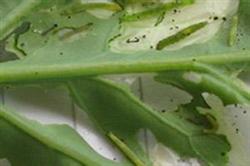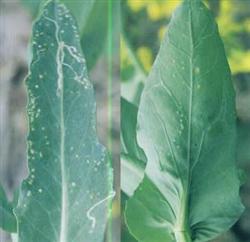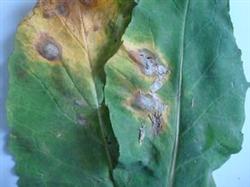Field management measures of wheat and rape during overwintering period

Since the end of autumn sowing this year, the overall temperature in the province has been on the high side, Rain Water has a uniform time and space distribution, good soil moisture, and the growth process, transformation and upgrading of wheat and rape in the field have been accelerated. At the beginning of overwintering, the seedling condition of wheat has caught up with the same period last year, and the seedling condition of rape is the best in the same period in recent years. However, at present, the imbalance of wheat oil seedlings in the province is still prominent, and the proportion of large and small seedlings is relatively high. in production, measures such as controlling prosperity and promoting strong, anti-freezing and protecting seedlings should be taken to ensure that wheat and rape survive the winter safely in the field. Pre-winter climatic conditions and their effects 1. Rain Water has suitable distribution and moderate rainfall, which is beneficial to the growth and development of wheat and rape. The soil moisture in all parts of the province is better this year. Since October, there have been more rainy days, but the rainfall is small, and the distribution of Rain Water is suitable. According to data from the provincial meteorological department, from the first ten days of October to the middle of December, the average rainfall in the province was 105.7 mm, slightly less than that of the normal year. Among them, the rainfall in the perennially arid areas of Huaibei was abundant, 118.2 mm, an increase of 32.6% over the normal year; the rainfall in central Jiangsu was 111.6 mm, slightly less than that of the normal year; and the rainfall in the south of the Yangtze River was 81.4mm, 40.5% less than the usual year. The continuous rainy and wet (wet) damage which often occurs in the rice stubble wheat areas of central Jiangsu and Jiangnan has not occurred, which is a rare non-dry and wet year in the history of the province. 2. The temperature is abnormally high in November, which is beneficial to the transformation and upgrading of late sowing and late planting weak seedlings. From October to mid-December, the accumulated temperature of the whole province was 1014.4 ℃, an increase of 95 ℃ over the normal year, and the accumulated temperature of Huaibei, central Jiangsu and Jiangnan increased by 71 ℃, 99 ℃ and 114 ℃ respectively. Among them, the temperature in November is abnormally high. The daily average temperature of the whole province is 13.8 ℃, which is 3.6 ℃ higher than that of the same period of normal year, which belongs to a significantly higher range, which is the highest value in the same period in history since 1961. The accumulated temperature in November increased by 108 ℃ over the normal year, and the accumulated temperature in Huaibei, central Jiangsu and Jiangnan increased by 45 ℃, 81 ℃ and 119 ℃, respectively. According to the accumulated temperature required for the growth of each leaf (wheat 75 ℃, rape 6-leaf 70 ℃, rape leaf 10-13 leaf 55 ℃), it can theoretically increase 0.6-1.6 leaves, which is equivalent to making up for the delay of sowing for about 10 days, which is beneficial to the transformation and upgrading of late-sowing wheat and late-planted rape seedlings, and reduce the proportion of weak seedlings. At the same time, the proportion of prosperous seedlings has also increased. 3. The temperature has been low since the middle of December, and the overwintering period has been advanced. After the end of November, affected by the cold wave weather, the temperature began to drop significantly. Especially in the middle of December, the daily average temperature was 1 / 2 ℃ lower than that of the normal year, and the daily average temperature of the whole province was below 3 ℃ for 5 consecutive days from north to south. The wheat and oil growth in various places entered the overwintering period one after another, about 5 days earlier than that of the normal year, which was beneficial to control the growth of prosperous seedlings, but posed a greater threat to the potential freezing damage of weak seedlings. Characteristics of seedling condition in overwintering period 1. Generally speaking, the seedling condition of wheat was better than that of the previous year, the dry stubble wheat was obviously better than that of the previous year, and there were more prosperous seedlings. According to the statistics of seedling situation in various cities during the overwintering period on December 20, the average basic seedling per mu of wheat in the province was 234000, 15000 more than that of the previous year, the average leaf age was 4.4 leaves, 0.1 more than that of the previous year, and the average total tiller per mu was 489000, 55000 more than that of the previous year. Among them, the average basic seedling per mu in Huaibei area was 249000, 8000 more than that of the previous year, the average leaf age was 4.7 leaves, 0.2 more than that of the previous year, and the average total tiller per mu was 584000, 75000 more than that of the previous year. In central Jiangsu, the average basic seedling per mu was 212000, which was 32000 more than that of the previous year, the average leaf age was 3.7leaves, 0.1 more than that of the previous year, and the average total tiller per mu was 340000, 12000 more than that of the previous year. In southern Jiangsu, the average basic seedling per mu was 197000, which was 20, 000 more than that of the previous year, the average leaf age was 3.4 leaves, 0.1 more than that of the previous year, and the average total tiller per mu was 272000, 26000 more than that of the previous year. According to the queuing statistics of seedlings, prosperous seedlings accounted for 8.4 percent, 3.1 percentage points more than the previous year; first-class seedlings accounted for 35.8 percent, 5.5 percentage points more than the previous year; second-class seedlings accounted for 36.5 percent, a decrease of 6.6 percent over the previous year; and third-class seedlings accounted for 19.3 percent, a decrease of 2 percentage points over the previous year. Compared with the middle of November, prosperous seedlings, class I, class II and class III seedlings increased by 2.8% and 5% respectively, and decreased by 1.2% and 6.6%, respectively. two。 The seedling condition of rape during the overwintering period was obviously better than that of the previous year. According to the investigation during the overwintering period on December 20th, the average density of transplanted rape was 7125 per mu, which was basically the same as that of the previous year, and the average leaf age, green leaf number, plant height, root neck diameter and opening degree were 12.8cm, 8.7cm, 27.4cm, 1.4cm, 1.3cm, 3.7cm, 0.5cm and 5.4cm respectively over the same period last year. The average density of direct seeding rape in the province was 18010 plants per mu, an increase of 2270 plants over the same period last year, with an average leaf age of 10.4leaves, green leaves of 8.5cm, plant height of 26.8cm, root neck diameter of 0.8cm and opening degree of 31.9cm, which increased 1.9cm, 1.7cm, 6.1cm, 0.2cm and 8.7cm respectively over the same period last year. According to the queuing statistics of seedling situation, the proportion of type I, II and III seedlings was 45.6%, 38.1% and 16.3% respectively, an increase of 11.7%, a decrease of 2.9% and a decrease of 8.8 percentage points over the same period last year. The absolute area of the three types of seedlings was 884000 mu, a decrease of 623000 mu or 41.5% over the previous year. Compared with last year, the proportion of three kinds of seedlings with overgrowth and early bolting is higher this year. In view of the fact that the seedling situation of wheat and rape is generally good, but the proportion of two seedlings (prosperous seedlings and three types of seedlings) is relatively high, the field management measures during the overwintering period should focus on preventing frost and protecting seedlings. We should conscientiously do a good job in suppressing mulching, clearing ditches, regulating soil moisture, fertilizing seedlings and so on, so as to ensure that wheat and rape survive the winter safely. Strengthening the suppression and mulching of wheat is an important work of anti-freezing and seedling protection, and the suppression should be carried out on a sunny day when the cold tail is warm and the temperature rises. In addition to suppressing the vigorous seedlings with older leaves and higher populations, in the wheat fields with large amount of rice straw returning, due to the loose surface soil layer and easy loss of soil moisture, it is especially easy to cause wheat tiller nodes exposed and hanging roots and dead seedlings in cold weather. Mechanical or artificial measures should be taken to do a good job in appropriate suppression in the field to improve the ability of soil moisture conservation and anti-freezing. For direct seeding of stubble and interplanting wheat in paddy field, the mulching can be strengthened by applying soil and miscellaneous fertilizer or covering with ditch mud. Straw mulching also has the effect of increasing temperature, preserving soil moisture and preventing frost, generally evenly covered with 150 to 200 kilograms of straw per mu. Transplanting rape with plate stubble should loosen the soil and obstruct the root to achieve the purpose of root protection, heat preservation and anti-freezing. There are more Rain Water in our province, especially the continuous overcast and rainy weather in Huainan area, which can easily lead to waterlogging in the field, which is an important obstacle factor affecting the high yield of wheat. Therefore, for fields that do not have a complete set of ditches or have low standards, it is necessary to make full use of the favorable opportunity for migrant labor to return home during the winter leisure period and the Spring Festival, surprise clean up the internal and external ditches, ensure the smooth flow of the ditch system, eliminate the hidden danger of waterlogging damage in the overwintering period, prevent serious waterlogging damage caused by continuous overcast rain in winter and spring, and avoid freezing and thawing alternately aggravating waterlogging and freezing damage. For the first-and second-class wheat fields with suitable sowing time, moderate basic seedlings, good foundation, normal growth and sufficient population, there is no need to apply fertilizer at present; for late-sowing late seedling fields and fields with insufficient number of tillers, urea can be applied of 5kg / mu, and the combination of "fertilizer and work" can promote the transformation and upgrading of seedling condition. For the rape fields of weak seedlings and red stiff seedlings planted late and late, urea was increased by 5kg / mu to promote the transformation of seedling conditions, and a small amount of nitrogen fertilizer could be applied to rape fields which were partially yellow due to stains and small plants, "catching yellow ponds to promote balance". For rape fields that are too prosperous and have bolted, measures such as bolting or topping of the main stem can be taken to control the vigorous growth, and fertilize as early as possible after the beginning of spring to prevent premature desolation. If severe frost injury occurs, mending fertilizer can be applied as appropriate to promote the recovery of growth.
- Prev

Integrated control techniques of rape white rust
The pathogen of rape white rust is white rust, which is a common disease in rape and cruciferous vegetables in the Yangtze River valley, which is often associated with rape downy mildew on the same flower axis. Symptoms: all organs in the aboveground part of rape can be susceptible to disease during the whole growth period. There are small light green spots on the surface of the leaves, and then yellow.
- Next

How to control black spot of rape
First, the symptom of rape black spot mainly harms leaves, petioles, stems and pods. Leaves infected with primary brown round disease spot, slightly concentric wheel pattern, sometimes surrounded by yellow halo, when the humidity is high, black mildew. The disease at the junction of petiole, petiole and main stem forms an oval to fusiform ring-shaped spot.
Related
- The first cup of black tea in spring, the flavor and history of tea gardens in Kenya, Africa
- The computer can not only choose potatoes, but also grow tea rice. AI will grow winter oolong tea champion.
- It is not only the inflated tea bitten by insects, but also engraved with the four seasons tea in Beipu.
- The Oriental Beauty Tea Festival in Zhuxian County takes the stage at the weekend to experience the plus-size feast of oil tea.
- & quot; Oriental Beauty Tea & Exploration of Emei in Hsinchu, the hometown of quot;
- The new variety of strawberry "Tainong 1" dessert is the first choice with mellow aroma. Crimson gorgeous
- History of Tea in Taiwan: from Wild Inner Mountain to Export Tea Garden
- Two types of Taiwan Oriental Beauty Black Tea won the British three-Star Award for Childhood Tea Xiang Zhang Jiaqi changed from pilot to champion tea maker.
- Banana species and varieties: the planting history of Taiwan Xianren banana and dwarf banana is long, is banana disease resistant?
- Coffee planting Technology: Qianjie Coffee from Seedling to harvesting

